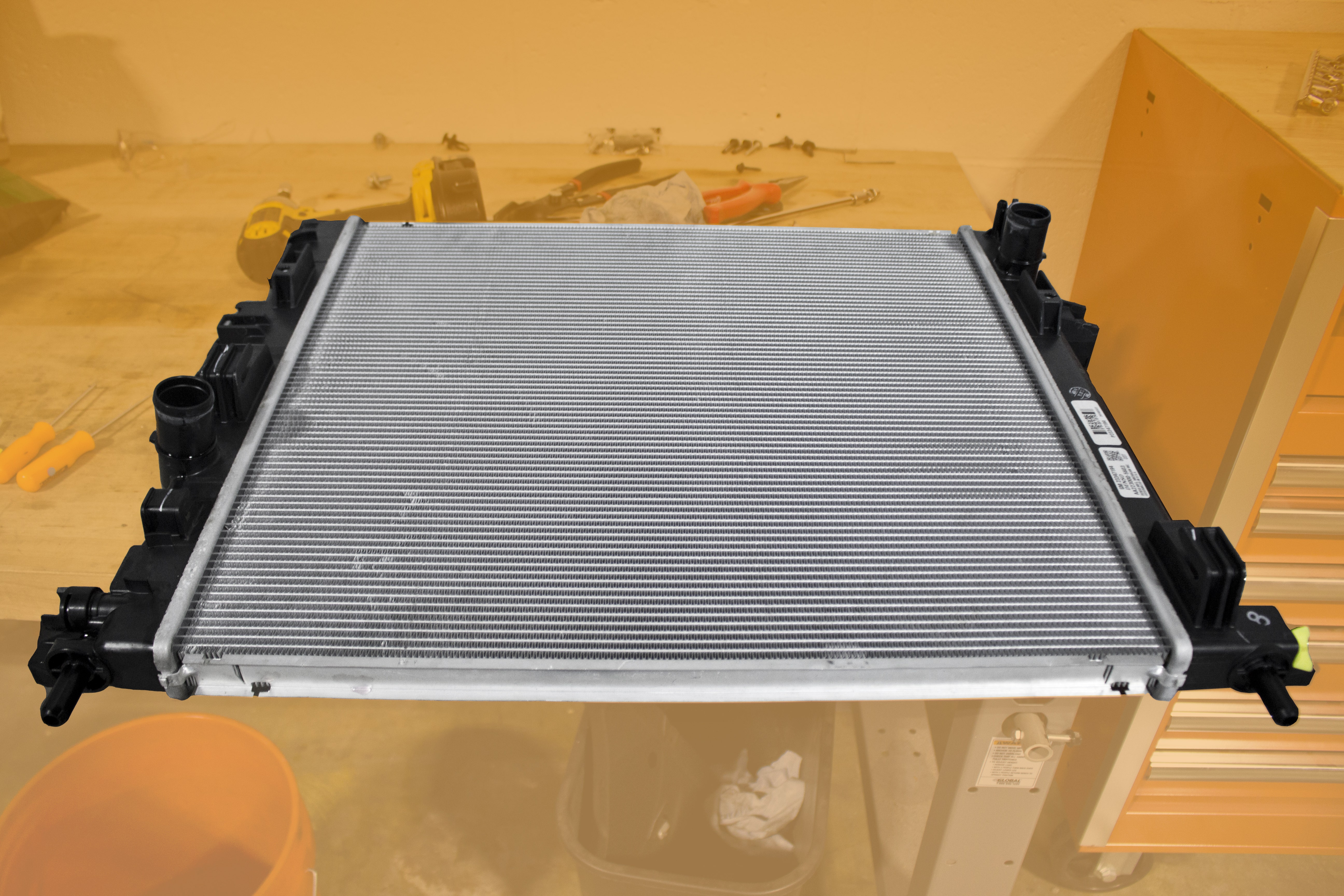
Cool to the Core - Radiator R&D, Part 1: Stock Review and Renderings
One of my favorite things about working for Mishimoto is the sheer breadth of our many different projects. We're working on much more than only Chevy parts! Our garage always contains some interesting combination of trucks, hot hatches, muscle cars, and more. With all that fun stuff just meters away (separated from me by nothing more than a thin layer of clear glass, no less), it's a small wonder I get anything done around here.
All this considered, I still occasionally receive some form of the following response after telling people where I work. "Oh yeah, I know Mishimoto. They make radiators, right?"
"...we engineer an array of Camaro parts that encompass everything from oil coolers to intercooler pipes."
This would be like calling Google a search engine company" is it? Yes. But that doesn't account for the tremendous success of all its other products, from email clients to artificial neural networks and self-driving cars. (Though, I'm sure the automotive arm of Google would be even more successful if we hadn't beaten them to the punch in numerous top-notch engineering hires.)
Though radiators do still account for a large part of our core products (no pun intended), we engineer an array of Camaro parts that encompass everything from oil coolers to intercooler pipes. Although we've been inundating you with all sorts of new Camaro parts, we have not forgotten our roots, and I'm excited to confirm the development of a Mishimoto 2.0T Camaro radiator!
What does a radiator do again?
Radiators are absolutely crucial cooling components in a vehicle, particularly if its power plant is a turbocharged performance engine like the LTG found in your Camaro 2.0T or Cadillac ATS. When you've got your foot planted to the floor, that turbo compressor gets spinning faster than a Mustang leaving cars and coffee, generating more heat than this post will once my Mustang-driving coworkers read it.
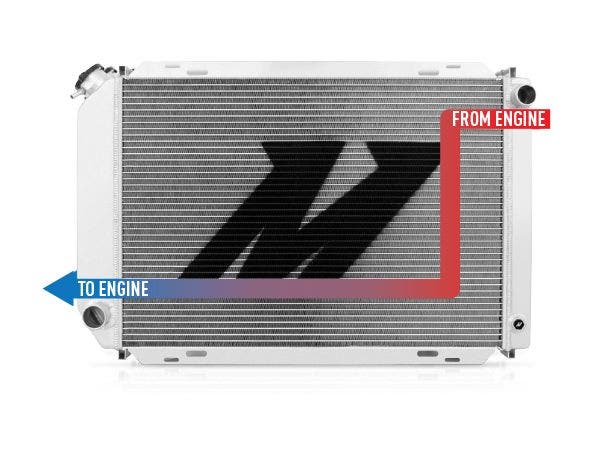
All that heat's gotta go somewhere, or else your oil will fail to lubricate. Gaskets will melt, plastic will misshape, and your engine will otherwise destroy itself from the inside out. Fortunately, innovators throughout automotive history figured out how to address this. One can circulate coolant through the engine to transport heat out of the system, which leads us to the radiator.
The radiator, a common type of heat exchanger (ahh, it's all making sense now"), facilitates heat transfer from coolant to the ambient air passing through the core, ensuring that coolant headed out of the rad and back into your engine lives up to its name and is cool enough to transport more heat energy. If your Camaro 2.0T is equipped with the Heavy-Duty Cooling and Brake Package from GM, the radiator gets some help from two additional auxiliary radiators behind the front bumper.
Why might I want to upgrade my Chevy parts?
Imagine you're driving your car in a particularly spirited fashion, winding out the RPMs and creating even more heat than usual. At a certain point, you'll have so much excess heat that your radiator won't be up to the task of scrubbing all of it to the atmosphere, and the coolant leaving the radiator will be slightly hotter than it should be.
Coolant travels back through the engine, again collecting more heat. After another pass through the radiator, now even less effective in cooling to normal temperature, the coolant's even hotter.
Now imagine that this positive feedback loop continues over and over. The coolant continues to collect thermal energy until eventually, you're left with an overheated engine and a nice photo of your still-smoking Camaro on your local track's wall of shame.
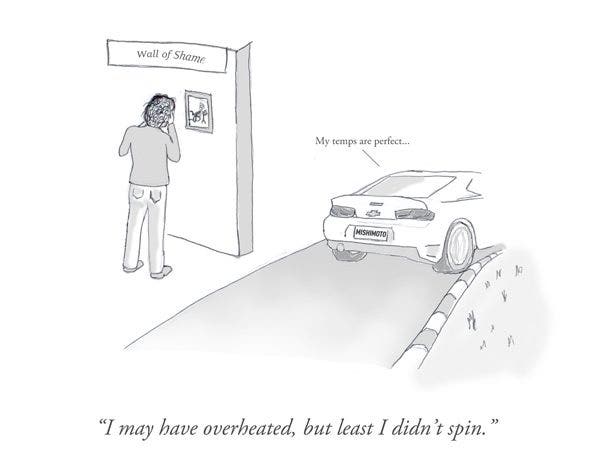
That's where we come in! Well, actually we come in well before the smoking-photo part. Our objective is to engineer a radiator that cools more efficiently than stock. This will provide your Camaro with improved durability and resilience during demanding driving conditions, so you can stay on the track longer, push your car harder, and not have to worry so much about heat.
So how will it be better?
There are many variables at play here, but one way to improve a radiator is to increase its size in any dimension possible. This would increase the effective surface area, leading to more effective heat transfer. As you can see, the stock radiator we are working on replacing is lacking a bit in the size department.
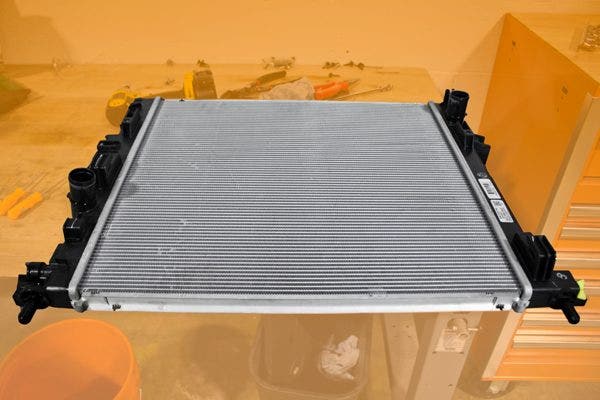
Look how skinny that stock Camaro radiator is!
It may be tall, but it's rather skinny, and that's definitely something we plan to address. Take a look at how much room we have to work with.
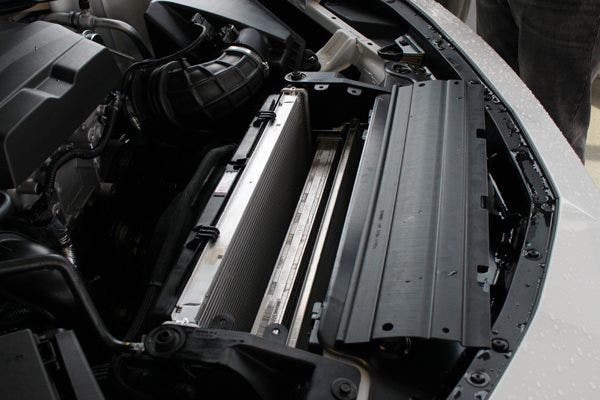
So much room for upgraded Chevy parts!
The radiator sits behind the AC condenser and the intercooler, but there is plenty of space to increase the thickness of the rad. We've got similar plans for our Camaro 2.0T intercooler!
The Design
Our engineering and drafting teams have already put in some time designing our improved radiator, and I'm proud to show off the result of their hard work so far.
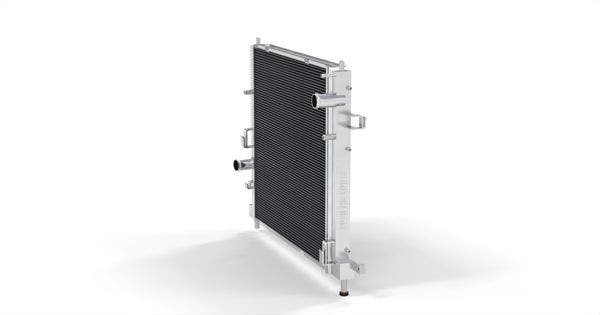
Side view of the Mishimoto Camaro radiator
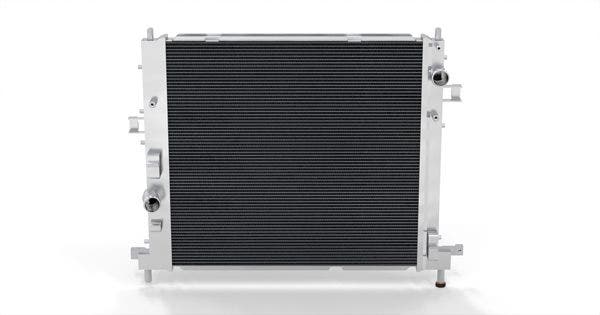
On the back, notice the mounting points, hose outlets, and connections to other Camaro parts.
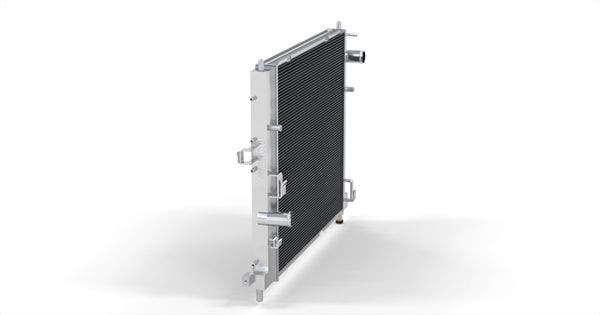
Here's the other side of our Camaro radiator
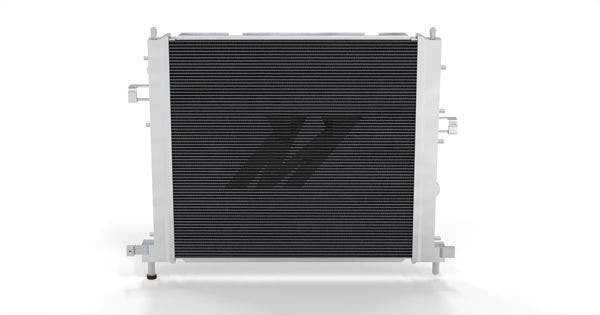
And finally, check out our Chevy parts from the front.
Coming Soon
So you've learned about how radiators work and you understand the potential weaknesses of the stock Camaro parts. You've also seen our improved version in the renderings, so what's next?
Stay tuned for some on-car action. First, we'll throw together a prototype or two to look at fitment. Once we're sure our Camaro radiator fits like a glove, we'll perform some testing to see what kind of cooling we can squeeze out of these Chevy parts.




